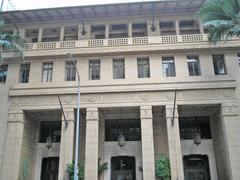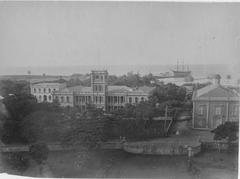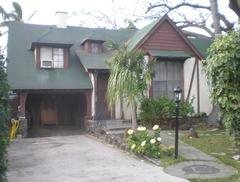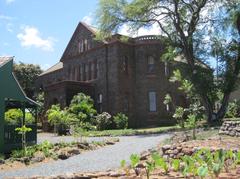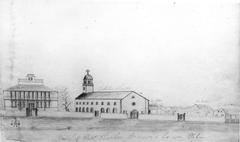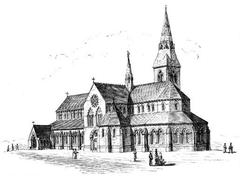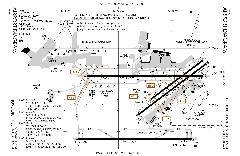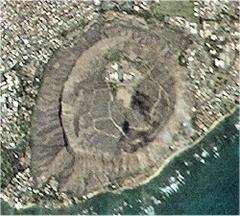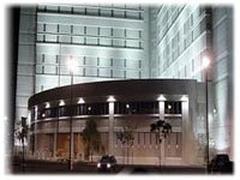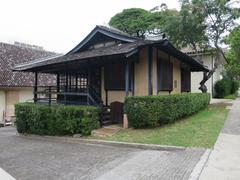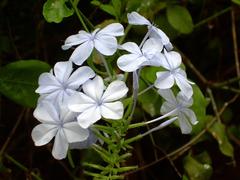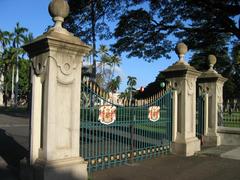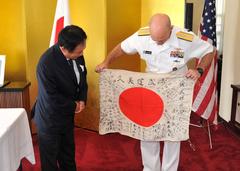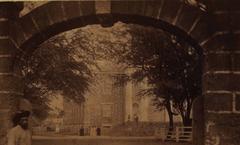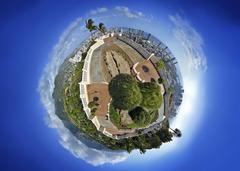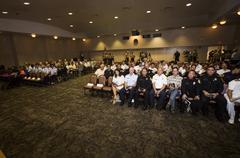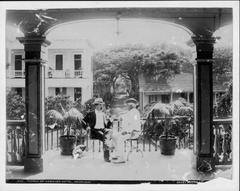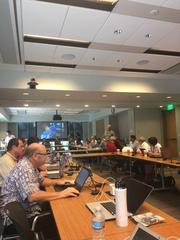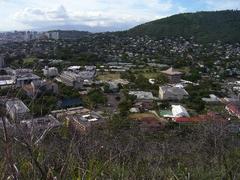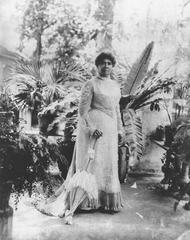
First Hawaiian Center Honolulu Visiting Hours, Tickets, and Travel Guide
Date: 04/07/2025
Introduction
The First Hawaiian Center is a striking symbol of Hawaii’s cultural heritage, architectural innovation, and economic progress, anchoring downtown Honolulu’s skyline. As the state’s tallest building and the headquarters of First Hawaiian Bank—Hawaii’s oldest and largest financial institution—the Center seamlessly blends postmodern design with native Hawaiian motifs, using locally sourced materials that honor the islands’ volcanic and oceanic landscapes. Beyond its corporate function, the Center is a vibrant cultural hub, welcoming the public with curated art galleries, open plazas, and occasional guided tours that highlight its unique architectural and cultural narratives (First Hawaiian Center official site; Honolulu Museum of Art; GPSmyCity; GoHawaii; SAH Archipedia).
Open weekdays from 8:00 AM to 6:00 PM with free access to its public spaces and exhibitions, the First Hawaiian Center is a must-see for architecture enthusiasts, art lovers, and history buffs. Its prime location at 999 Bishop Street places it within walking distance of major historical landmarks including ʻIolani Palace, King Kamehameha I Statue, and Kawaiahao Church, making it an ideal starting point for exploring Honolulu’s rich heritage.
This comprehensive guide covers everything you need to know for your visit: from hours, admission, and accessibility, to travel tips, nearby attractions, and practical visitor advice.
Table of Contents
- Introduction
- History and Development
- Architectural and Cultural Highlights
- Visiting Hours, Admission, and Accessibility
- Location and Nearby Attractions
- Art Galleries and Community Engagement
- Visitor Experience and Practical Tips
- Frequently Asked Questions (FAQ)
- Summary and Recommendations
- References
History and Development
Commissioned by First Hawaiian Bank and completed in 1996, the First Hawaiian Center was designed by Kohn Pedersen Fox Associates in partnership with Architects Hawaii Ltd. The project’s vision was to create a structure that not only reflected Honolulu’s emergence as a Pacific business hub but also honored Hawaii’s unique cultural and natural environment (GPSmyCity). The building’s completion marked a significant milestone in Honolulu’s urban evolution, blending modern business with cultural celebration.
Architectural and Cultural Highlights
At 429 feet (131 meters) with 30 stories, the First Hawaiian Center’s postmodern architecture features two interlocking triangular volumes, a design that reduces visual bulk and offers dynamic views from various angles (GoHawaii). The mauka (mountain-facing) facade is finished in beige Clandore limestone, symbolizing Hawaii’s volcanic heritage, while the makai (ocean-facing) side displays blue glass reminiscent of the Pacific Ocean.
The building’s orientation and window designs—horizontal louvers facing the ocean and vertical windows facing the mountains—connect interior spaces to the surrounding natural environment. The lobby is illuminated by custom glass installations by artist John Carpenter, creating prism effects that evolve with the changing sunlight (Hawaii Magazine).
Sustainability is central to the building’s design. Energy-efficient systems, water-saving landscaping, and the use of local materials demonstrate a commitment to environmental stewardship (The Science Survey).
Visiting Hours, Admission, and Accessibility
- General Hours: Monday through Friday, 8:00 AM to 6:00 PM. Closed weekends and major holidays.
- Art Gallery Hours: Monday through Friday, 8:30 AM to 4:00 PM (confirm current hours on the Honolulu Museum of Art website).
- Admission: Free for all public areas, including galleries and the landscaped plaza. No tickets required.
- Guided Tours: Occasional guided tours are available; check the First Hawaiian Center website or Honolulu Museum of Art for schedules.
- Accessibility: The building is fully ADA-compliant, with ramps, elevators, accessible restrooms, and ample space for mobility aids. Local providers offer wheelchair and scooter rentals (Special Needs Group).
- Transportation: Centrally located at 999 Bishop Street, the Center is easily accessible by public transit, taxi, or rideshare. Paid parking is available in nearby garages.
Location and Nearby Attractions
The First Hawaiian Center’s downtown location places it within walking distance of several major Honolulu historical and cultural sites:
- ʻIolani Palace: The only royal palace in the U.S., offering guided tours and accessible grounds.
- King Kamehameha I Statue and Aliʻiolani Hale: Iconic landmarks across from the palace.
- Kawaiahao Church: Historic “Westminster Abbey of the Pacific.”
- Chinatown: Art galleries, markets, and eateries in a vibrant, walkable neighborhood.
- Aloha Tower: Waterfront observation deck and marketplace.
- Hawaii Theatre and Alexander & Baldwin Building: Notable examples of historic and modern architecture.
- Honolulu Museum of Art: Extensive art collections and rotating exhibits, a short drive or bus ride away.
For more ideas, see Boutique Hawaii and Meganstarr.
Art Galleries and Community Engagement
The First Hawaiian Center integrates contemporary art into its public spaces through three gallery areas curated in partnership with the Honolulu Museum of Art (SAH Archipedia; First Hawaiian Bank). With approximately 6,000 square feet of exhibition space, the galleries feature rotating exhibitions of local, national, and international artists, often focusing on Hawaii and the Pacific region.
Notable artists such as Satoru Abe, Masami Teraoka, and Kapulani Landgraf have exhibited here. Programs include solo and group shows, thematic exhibitions addressing identity and environmental issues, and multimedia installations. The Center also hosts artist talks, panel discussions, and workshops to foster creative engagement and support Hawaii’s art community.
Visitor Experience and Practical Tips
- Best Times to Visit: Weekday mornings for quiet gallery experiences.
- Photography: Allowed in most public spaces and galleries, but check for restrictions and avoid flash or tripods.
- Dining: Onsite coffee shops and nearby restaurants offer a range of dining options, from local Hawaiian fare to international cuisine.
- Dress Code & Security: Smart casual attire recommended. Security screening may apply; respectful behavior expected in galleries.
- Accessibility Support: Reserve mobility aids in advance if needed; public transportation is wheelchair accessible.
- Combined Visits: Plan a walking tour to include the Center, ʻIolani Palace, Aliʻiolani Hale, Chinatown, and Aloha Tower for a full day of culture and history.
Frequently Asked Questions (FAQ)
Q: What are the First Hawaiian Center visiting hours?
A: Monday–Friday, 8:00 AM–6:00 PM (galleries open 8:30 AM–4:00 PM; confirm current hours before visiting).
Q: Is there an admission fee or are tickets required?
A: No, admission is free and no tickets are needed for public areas and galleries.
Q: Are guided tours available?
A: Occasionally, during special exhibitions or by arrangement via the Honolulu Museum of Art.
Q: How accessible is the building?
A: Fully ADA-compliant, with accessible entrances, elevators, restrooms, and parking.
Q: What are the best nearby historical sites to visit?
A: ʻIolani Palace, Aliʻiolani Hale, King Kamehameha I Statue, Chinatown, Aloha Tower, and the Honolulu Museum of Art.
Summary and Recommendations
The First Hawaiian Center epitomizes modern Honolulu—a fusion of financial strength, architectural elegance, and cultural vibrancy. Its free, accessible galleries highlight the work of Hawaii’s artists, while its proximity to significant historical sites makes it an ideal starting point for exploring downtown Honolulu. Whether you seek architecture, art, or a window into Hawaii’s evolving identity, the Center delivers a memorable and enriching experience.
For current exhibitions, tours, and updates, visit the First Hawaiian Center website and the Honolulu Museum of Art. To enhance your visit, download the Audiala app for guided tours and local tips.
References
- GPSmyCity
- GoHawaii
- SAH Archipedia
- First Hawaiian Bank Official Site
- Hawaii Magazine
- Special Needs Group
- Boutique Hawaii
- Meganstarr
- The Science Survey


